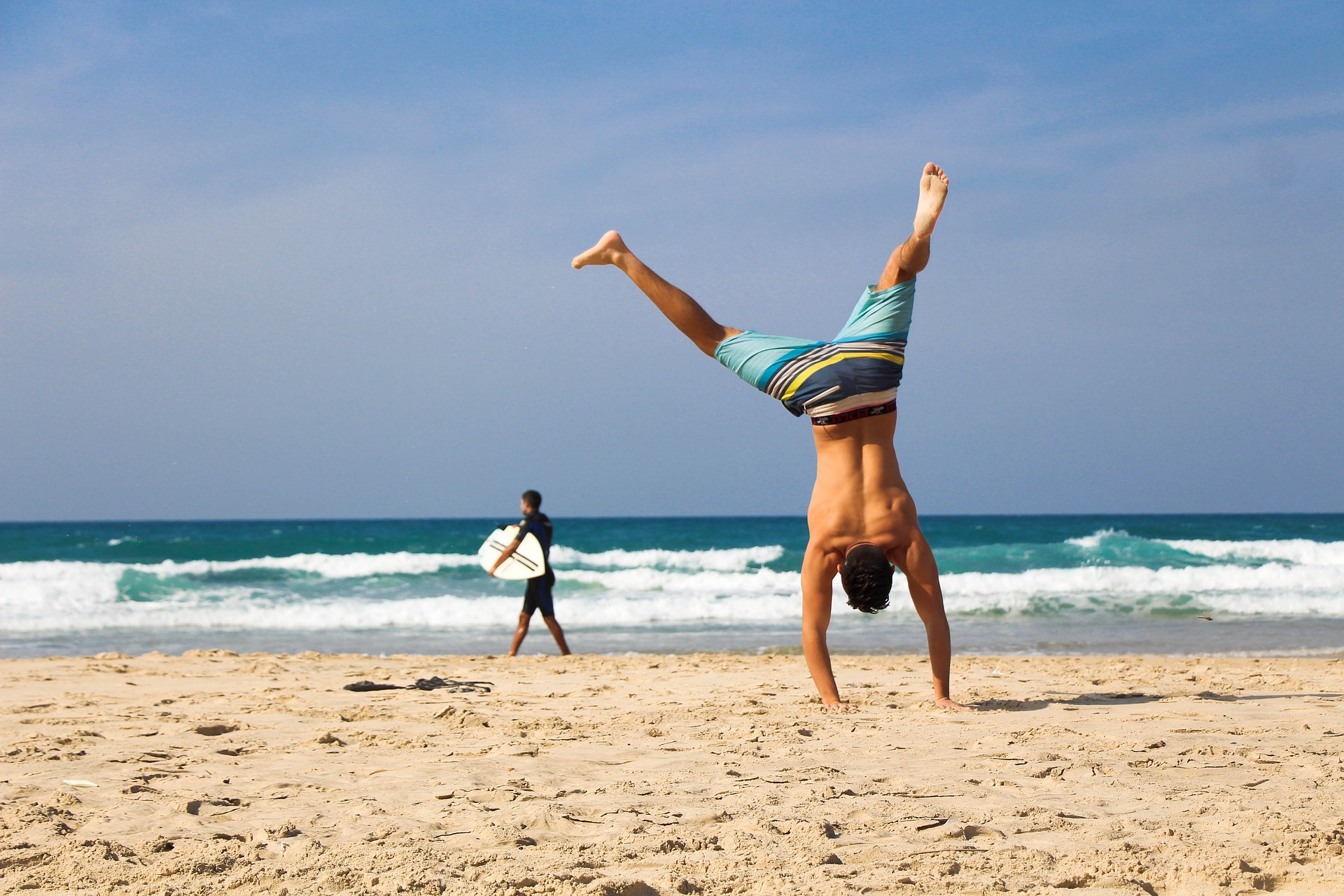
Handstand standing refers to the movement of holding the ground with both hands for balance, and extending the legs upwards. In yoga, it is called standing with the head or Sirsiasana, and it is one of the difficult balance exercises. These handstands do not require any cost and have the advantage of being able to do without special tools and equipment. In addition, it has an advantage as a whole body exercise because it uses the muscles and skeleton of the body during the process of lifting the legs upward with both hands. So today, let’s take a look at the various health benefits of handstand. Various effects of handstand
1. blood circulation
The first effect you get from the handstand motion is the effect of promoting blood circulation. It is said that when you stand on your hands, the direction of gravity is reversed, and blood flows smoothly even in parts of the body where blood does not normally flow, and blood flow increases. As the blood flow is improved, it is known to be effective in relieving various symptoms such as cold hands and feet and stiff shoulders.
2. Improve brain function
When you are standing still, you need a lot of blood pressure to get blood, including oxygen and nutrients, to your brain. It is said that when you do handstand, blood flows naturally to the head, helping to improve blood flow to the brain. And it is known that this improved increase in blood flow to the brain helps to improve brain functions such as memory and concentration.
3. Strengthen your muscles
It is said that it helps to strengthen the muscles of the shoulder and arm that support the load by performing handstand. In addition, the process of standing upside down is said to be effective in strengthening the back muscles and the core muscles that support the spine, pelvis, and abdomen, which are the center of the human body. In addition, handstand standing is excellent for relieving tension in the muscles of the legs and lower back supporting the upper body, and it is also effective in correcting imbalanced postures such as a bent back and a forward pelvis.
4. Stress Relief
Excessive mental stress and tension are said to cause various abnormalities in each body to the extent that it is called the root of all diseases. It is said that if you hold your body upside down for about 10 seconds through handstand standing, EMG activity will decrease. This action is said to have a good effect in relieving stress, relieving anxiety and nervousness, and helping to find peace of mind.
5. Improves lower extremity edema
In the case of the legs, it is the part where the blood tends to converge under the influence of gravity. Not only blood, but also lymph and water circulating in our body are affected by gravity and accumulate in the lower body, making it easier to cause swelling of the skin. It is said that when you stand on your hands, the lymph and water that have gathered in your legs will flow from your legs to your head, helping to prevent and relieve swelling.
Other Effects In addition to the various effects introduced above, handstand can help skin health by stimulating the capillaries of the face and discharging waste products from the skin. In addition, it is reported that the effect of relieving the pressure of the digestive organs is strengthened to improve the digestive function. How to do handstand exercise and precautions
The basic posture of handstand is to first raise your legs with moderate strength while supporting them at shoulder width. And when standing upside down, your gaze should look at a point between your hands, and your wrists, shoulders, waist, and toes should be perpendicular to the ground to maintain balance. Maintain this posture for about 1 minute. If the movement does not work well, you can try with your head and elbows on the ground, try to increase the contact area, or lean against a wall or with the help of an assistant. These handstands have various health benefits, but because of the high level of difficulty, there is a risk of injury if done incorrectly. Therefore, rather than trying too hard, you can minimize the risk of injury by strengthening your basic strength to some extent. In addition, it is recommended to limit the risk of worsening symptoms and causing problems if you have blood pressure, spine, and eye-related diseases.
































